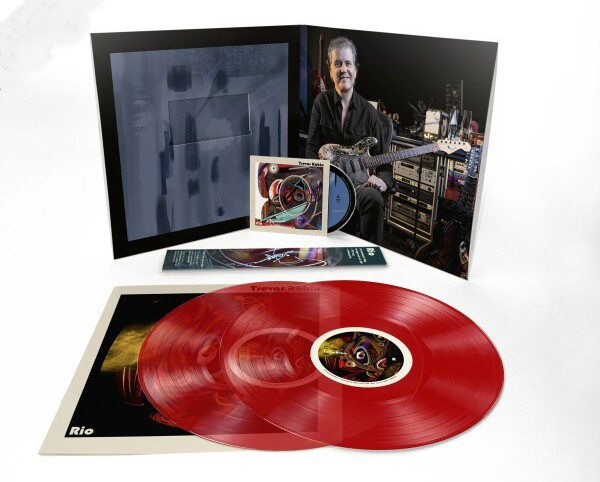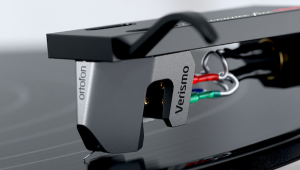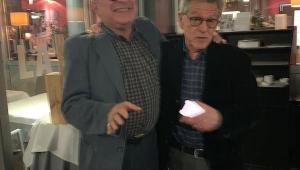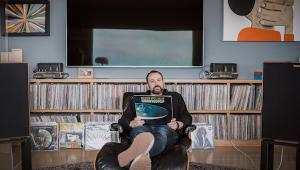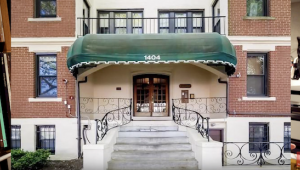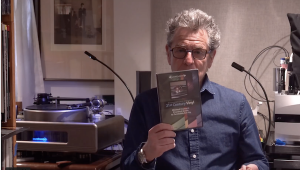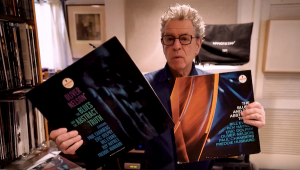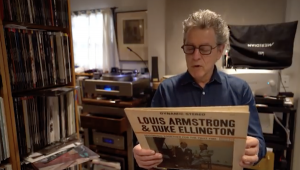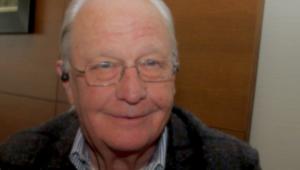Trevor Rabin Gives a Hale and Hearty Yes to Doing Double 180g Vinyl for New Solo Album Rio and Explains How Bob Ludwig’s Mastering “Saved” Yes’ Big Hit 1983 LP, 90125
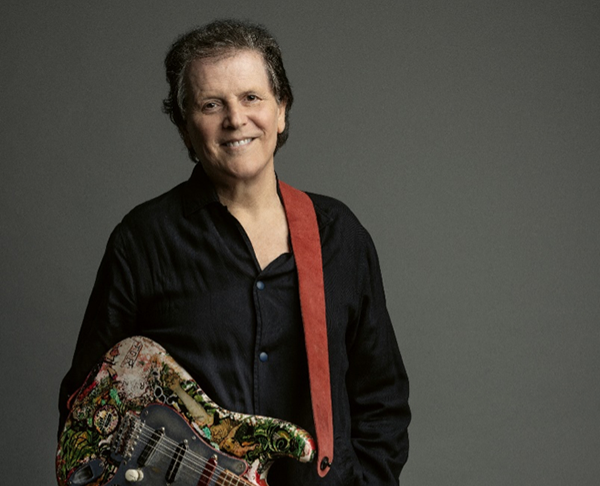
Trevor Rabin is a truly cinematic artist — and I don’t just say that because the South African-born guitarist/composer joined a band in early 1982 called Cinema that soon enough brought its name back around to Yes before they released November 1983’s era-blending megahit LP, 90125.
In the interim, Rabin has scored well over 50 films (such as Armageddon and Remember the Titans) and TV shows (like 12 Monkeys and National Treasure: Edge of History) inclusive, but he also continued to work with the balance of his Yesmates on and off over the ensuing decades — including a successful 2016-17 tour and ensuing live album with vocalist Jon Anderson and keyboard wizard Rick Wakeman initially under the ARW acronym before being fully, and legally, billed as YES (all caps) Featuring Jon Anderson, Trevor Rabin, Rick Wakeman. If you haven’t had the full-on ARW/YES experience yet, it’s well worth checking out the 2018-released opaque-orange 3LP set Live at the Apollo (50th Anniversary) on Eagle, which can be found here and elsewhere (for an SRP of $53.99).
Rabin continued to release some fine, adventurous solo albums all along the way as well — the latest being Rio, which is out today, October 6, on InsideOut Music in a variety of 2LP vinyl configurations. Besides the standard 180g 2LP set available Stateside (SRP: $39.98), Rio is also available in a) translucent sea blue vinyl (1,500 copies; SRP: $39.98), and b) red vinyl with three bonus tracks on Side D, but only as part of a deluxe box set that also includes a Blu-ray (300 copies; SRP: $74.98). Either/both of those latter two editions of Rio can be ordered directly from InsideOut.

As for the technical stats, Optimal in Germany did the European pressing of Rio, while MRP handled the U.S. pressing. InsideOut says the lacquers were cut “in house at the respective plants” via Rabin-supplied digital files. (See what Rabin has to say about that, as well as his hands-on approach to the mastering process, in the Q&A section below before passing any pre-judgment — the sonic proof, as always, is in the grooves.)
Rio covers enough musical ground that it could easily be retitled Rio Grande, given the full scope of Rabin’s compositional skills being on full display in the widescreen opening track “Big Mistakes” in addition to his recently discovered Americana proclivities in both “Oklahoma” (make sure you catch his nod to “Happy Trails” in the middle of the track) and “Tumbleweed” (which also features a stacked cavalcade of Beach Boys-like harmonies). “I was writing all the time through the long, long period of not doing a vocal record,” Rabin admits, “and one of the things I got was a B-Bender [an accessory that assists the bending and pitch of a guitar’s B string, a la Clarence White and Gene Parsons]. I really got into that, which led to me visiting some kind of country demographic, if you like.” (We like, pardner — very much so.)
Rabin, 69, and I got on Zoom together recently to discuss the vinyl-centric impetus of Rio, why it’s important for him to personally attend as many mastering sessions as he can, and why he feels Bob Ludwig’s mastering “saved” 90125. One word can bring you round / Changes. . .
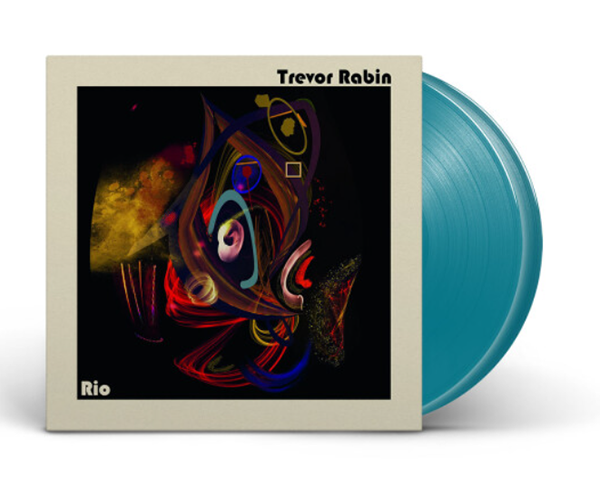
Mike Mettler: Did you always feel that, “Hey, this record has to be on vinyl, and I have to make sure I do a double LP for it”? If you tried to cram all this information [i.e., 55 minutes’ worth of music] on just a single disc, I think you might’ve had to make some production compromises. Is that fair to say?
Trevor Rabin: Yeah, this album would have really suffered on just one LP. I’m giving my age away (laughs), but I grew up very much in vinyl. I was used to going to the mastering session thing, and having some jokes while I was there too — you know, grabbing the helium and going [lets out a high-pitched helium-induced whine], because the helium cools down the cuts. So, I grew up very much in that area.
When the record gets — and I’m sure you know this, but I’ll just say it — when the record gets to the end and it’s taking much sharper corners, it can’t deal with the bottom end and the level. And I remember, even as far back as 1977, you had to be really cognizant of the fact that, “Okay, the songs that need a lot of breathing space for the bottom end and stuff — you need to put them at the beginning of the album because there’s more room for all that.” The Rio album wouldn’t have been able to fit, in any kind of quality way, on one album, so I’m delighted it’s on two LPs. [Rabin’s citing of “1977” refers back to his debut solo album, Beginnings, which was released in 1977 on RPM. When it was rereleased on Chrysalis in 1978, it was renamed Trevor Rabin.]
For years and years, the one way you would deal with the ever-increasing low-end — the bass content — all the compressors and everything led you to be able to have more “air,” if you like, on the record. There were compromises in the cutting stage, and putting it down on vinyl. There was a thing called an elliptical equalizer, which used to take all the information from whatever you wanted it to — but we used to take it from, I think, 65Hz down. What it did was it just basically shoved everything in the center so you didn’t have all this area [spreads hands wide] taken up. And, boy, the things we used to do! It was really an art, cutting vinyl.
Mettler: Did you actively go to the cutting/mastering sessions yourself?
Rabin: Oh yeah. Unless I absolutely couldn’t go, I used to go to just about every single cutting session.
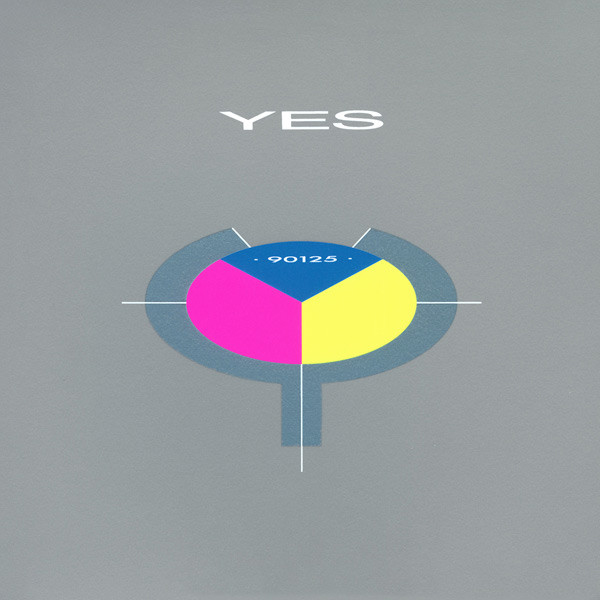
Mettler: Oh, good. I’d love to hear about the session, or sessions, you went to when Yes’ 90125 was being finalized, since that album turns 40 later this year. [90125 was released in November 1983 on ATCO, and it was the first Yes album to feature Rabin as lead guitarist, vocalist, a key producer, and one of the band’s then-chief songwriters. (The main production credit on 90125 rightly goes to Trevor Horn, but Rabin was very much involved in it himself.)]
Rabin: Yeah, Bob Ludwig cut that. He’s the master, you know? I’d never met him before that, but I flew to New York for it. I live in L.A., but it was so important to me personally to be there.
The record was fine, but I felt it was (slight pause) — it was like a pair of glasses that had a little butter on it, or something. (chuckles) And boy, Bob stuck some audio Windex on, and just cleaned it up. He saved the album — which sounded good already, but he really, really made a huge difference there.
Mettler: Wow. Any 90125 songs specifically that you remember thinking, “We need to do something here”? Which songs stood out to you in that regard — the ones you felt needed Bob’s magic touch?
Rabin: Well, there were three songs, very much in particular. “Owner of a Lonely Heart” [Track 1, Side One] just sounded . . . (pauses) well, he really whipped away the things you couldn’t see. He made a big difference to that song. [“Owner of a Lonely Heart” was released as a single in October 1983, and it became Yes’ first, and to date only, No. 1 single in the United States.]
And then the song “City of Love” [Track 4, Side Two]. which was very compressed, I mean, you’re really screwing with stuff if you try and decompress, but he did certain things with it like adding some warmth in the bottom end. He did an amazing job there. And then the other song was “Leave It” [Track 2, Side Two]. Just in terms of the whole album, he did a magnificent job.
With the cutting — a lot of times, people say, “Oh, the album is mixed. Great. Send it off to cutting.” Next thing you know is, you’ve got a problem. You’ve got this huge track at the end with tons of level and tons of information, and the needle’s not going to be able to read it properly unless you have a 10-pound weight on it! (both laugh)
Mettler: Right? Bring out your quarters too, folks. (more laughter) We’ve talked about this song before, but I always like to bring up “Changes” because it’s one of my favorite songs you’ve ever been a part of. It ends Side One on the original 90125 record, and there are literally so many changes going on in that song. If we didn’t get to hear all of what the keyboards were doing or get the dynamic ferocity of the attack on your guitar-solo sequences — if any of that, to use another Yes word, drama was missed, you would know, and it wouldn’t sound right to you, especially.
Rabin: No, that’s exactly right. There’s a lot of information on that song. I actually remember hearing Bob suggest this — and I don’t know where it was implemented if or not — but there were times when he said, “Look, you need to pull this track up to near the front of the sequencing.” He had that reputation. He could do that, you know? I don’t know where it happened or if it happened, but I remember hearing that suggestion of his.
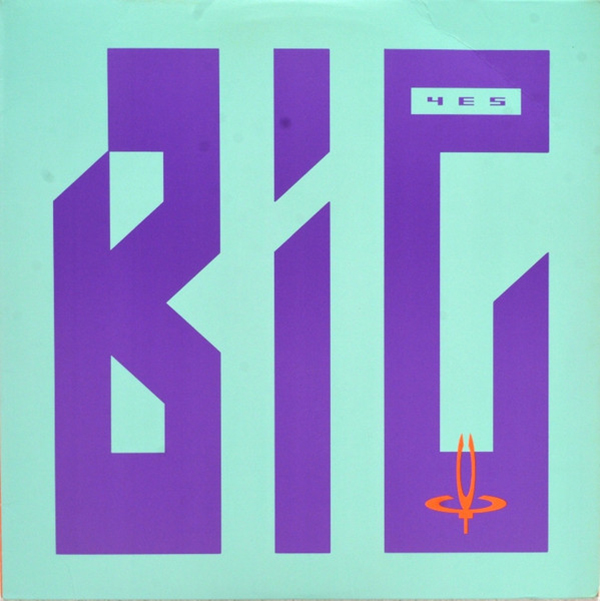
Mettler: Before we get back to talking more about Rio, I’d like to briefly get your take on 90125’s followup, Big Generator [released on ATCO in September 1987]. That album has a lot of big elements to it, to say the least — probably even bigger than those on 90125 because you spent a lot of time producing that record. There are so many big sounds on Big Generator that it would not have worked if you hadn’t taken the care to sequence it properly, right?
Rabin: Yes! No, that one was really difficult — on top of which, it was digital.
Mettler: Right. Are you okay with listening to digitally created and/or mastered albums on vinyl?
Rabin: Oh, absolutely. I don’t really have a problem with it. In fact, as long as — you know, choose your EQ units carefully, because some are harder than others, and some are softer. Back then, I was using the old Fairchild limiters, and things like that.
It’s funny — Geoff Emerick actually produced a song on a previous solo album of mine [1979’s Face to Face, on Chrysalis]. And when we came to mix it, he said, “You want to go out for a coffee?” And I said, “Oh, I thought we were mixing.” He said, “Yeah, but we’ve got to wait 25 minutes for the Fairchild to get to its sweet spot.” (laughs heartily) [On Face to Face, Rabin is credited as the album’s producer, and Emerick shares a “recorded by” credit along with Hennie Hartman.]
Mettler: To bring it back to Rio — or as I’m still going to call it, Rio Grande (both laugh) — the breadth of recording is apparent right from the jump with the opening track on Side A, “Big Mistakes.” It literally shows off everything you do as an artist because it’s got really expressive vocals and layered choruses, along with all those other “Rabinesque” elements. Was that song always the first choice to open the record? Because it seems to me like, “This is Trevor Rabin 101. This is everything I do in one song.”
Rabin: Yeah, it was definitely the — I wouldn’t say the flagship, but certainly the opener. Once I got the guitar sound for the chords — and it’s two chords, basically, almost through the whole song, other than bits and pieces — once I got that sounding the way I wanted, there was a little bit of that vinyl thinking of, ”Oh, this is a huge track that’s going to take up a lot of room, so — Track 1.” And then I thought, “No, I don’t have to worry about that, do I?” But I’m glad I did, since we fit it onto two albums [i.e., two LPs].
Mettler: Are you using a Vocoder for some of those vocal sequences on songs like “Push” [Side A, Track 2], “Tumbleweed” [Side B, Track 4], and “These Tears” {Side C, Track 1]? Is that how you’re processing them, or is it something else? I was wondering what you were doing on them, especially “These Tears” — like, if it was your Jeff Lynne impression, or if you were doing a 10cc kind of thing.
Rabin: Oh, that’s funny! Yeah, the old 10cc trick, right? (chuckles) Well, to be honest, I actually used a very similar technique in the old days. I did it before with a band I was with years ago, Rabbitt [in the mid-1970s]. We used to record a whole load of vocals, and we’d put them on a reel-to-reel with a reel hanging down so it would loop on a ¼-inch machine. We’d put that vocal in stereo, on two tracks, and then come in with the next chord. You’d have like five different chords on ten tracks, and then you’d mix those in, depending on the chords.
But obviously, with digital, you don’t have that problem. You don’t have to have the reel-to-reel thing — you just crossfade, and have those chords. It’s the same technique musically, and it’s exactly what happened on that track. So, it’s a good question to ask about whether I’m using a Vocoder, because one could say it sounds like a Vocoder could be there, but it’s actually real vocals that are being used.
Mettler: Ah, so now we know for sure. Did you get to check the test pressings for Rio?
Rabin: Yes, I did get some test pressings. I got the vinyl here, and I put it on. I have a very, very, light needle — it’s just an old Technics. It never jumped anywhere, and the levels were pretty good too. As I was listening, I realized I had about a whole hour of listening to do. (laughs)
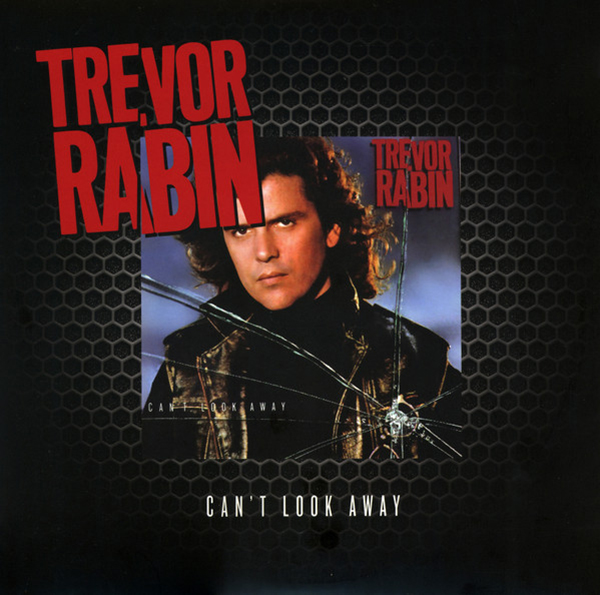
Mettler: Well, I’m glad we’ve got three, and sometime four, sides of vinyl here with Rio. Some of your other solo work has been reissued on vinyl in recent years [by Blue Day Label, in the UK] like [2003’s] 90124 and [July 1989’s] Can’t Look Away. Have you been involved with any of those reissues personally?
Rabin: Well, I wasn’t asked. Every now and then, I’ll see something that comes out and it says, “remastered” — and I’m like (slight pause), “Wow. I’d love to just been asked.” Certainly, you don’t need my permission. The contracts clearly state that — but, creatively, it’d be nice to just get my ear on it, you know?
Mettler: Well, we definitely need you and your ears involved in any future reissues of your catalog on vinyl. What was an early record that you had growing up that you called the talisman record for yourself as a kid?
Rabin: I remember — and I don’t know if I was 13, 14, or 15, but we could mathematically work it out. (MM laughs) Anyway, there was a record store about a mile from where I lived [near Johannesburg, South Africa], and I used to jump on my bicycle and go to the little record store there. As soon as I walked in, the guy would say, “It’s not in.” And I’d say, “Is it coming tomorrow?” That record was Blind Faith. [Seeing how Blind Faith was released in August 1969 on Polydor internationally, the math tells us Rabin would have been 15 years old at that time.]
Mettler: Oh, wow. Did you get the one with the racy cover, or the edited cover?
Rabin: I got the racy cover — which was amazing, considering South Africa at the time.
Mettler: I was going to say — considering where you lived at the time, that could have been, you know, a bit dicey.
Rabin: It could have been grounds for jail for me, for having this controversial cover! (chuckles)

Mettler: One final thing before we go. Since you’re a futuristic person (Rabin laughs), I’m going to jump us 50 years into the future, to 2073. And, as I like to say to people when I ask this question, you and I are probably not physically on the planet then unless some weird science is going on. So, however people listen to music in 2073, and they type in “Yes” and/or “Trevor Rabin” into their listening devices, what do you want them to get out of that experience?
Rabin: Wow! I would say, more importantly than listening to me technically — the kind of stuff we’ve mostly been talking about — is just compositionally, because, by that time, it’ll be out of the park, whatever’s going on out there. So, I think compositionally, that would be the safest answer. (laughs)

TREVOR RABIN
RIO
180g 2LP (InsideOut Music)
Side A (LP1)
1. Big Mistakes
2. Push
3. Oklahoma
Side B (LP1)
1. Paradise
2. Thandi
3. Goodbye
4. Tumbleweed
Side C (LP2)
1. These Tears
2. Egoli
3. Toxic
Side D – Bonus Tracks (LP2)*
1. Spek & Polly
2. Fragile (Demo)
3. Georgia
*Bonus tracks are only available on deluxe box set edition;
Side D contains an etching on all other LP editions
